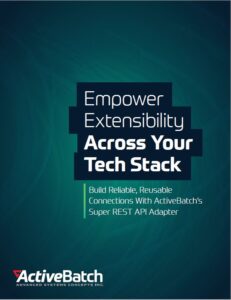Gartner’s Top Integration Strategies For IT Teams

Most organizations would grind to a halt were it not for the web of integrated tools that manage everything from customer data to daily operations. Building these integrations can take time, and getting it right is paramount — a faulty integration can have an immediate impact on the business.
But building and maintaining integrations is becoming increasingly complex as organizations deploy hundreds of disparate tools from almost as many vendors. Large enterprises use, on average, 900 applications spread across hybrid and multicloud environments. Only 28% of those applications are currently integrated, a survey report by MuleSoft found.
Integrations challenges aren’t new, but they’re becoming more common and impacting how quickly IT teams can respond to business demands.
Over the past couple of years, Gartner Inc. has been offering recommendations and best practices for integrating IT and business tools. We’ve collected and summarized a few of the most relevant.
Best Practices For Streamlining And Simplifying Integrations
IT teams often rely on a variety of integration methods, including custom scripts, APIs, and vendor-provided tools. But the practices and workplace culture around integration can be just as important.
Rethink The “Factory Model”
Most organizations rely on a small team of high-level developers or specialists to deliver integrations. Gartner refers to this as the factory model of integration services. Instead of democratizing access, it relies on a handful of specialized developers. This causes a bottleneck as these high-level employees work on integration requests in between high-value projects. As the backlog of integration requests grows, so too do calls for shadow IT.
The factory model ultimately leads to “risks in terms of loss of control, increasing technical debt and an inability to support new use cases.”1
“Integration has traditionally been delivered by a centralized integration team following the factory model. This centralized integration (or factory delivery) model cannot keep pace with the ever-increasing and changing demands of integration.”
– Gartner, Ensure Your Integration Strategy Supports Modern Integration Trends
Instead of relying on integration specialists, the ability to build integrations should be spread across IT teams. Qualified developers, operators and administrators should be given permissions and tools needed to build their own integrations. This enables faster scaling, increases agility and reduces the time it takes for IT teams to deliver new services.
Reusable APIs
API use is at an all time high, with organizations implementing both internal and external API integrations for an endless number of use cases. APIs are flexible, customizable, and make it possible to integrate disparate tools without having to write custom code. But without a cohesive strategy, API integrations become lost or forgotten, forcing IT teams to build APIs from scratch, even if an existing API is already in production.
In order to simplify an API-led integration strategy, IT teams must put an emphasis on reusability. IT leaders “…must ensure that they are not creating new APIs for integration when there are already existing APIs that can help them solve an integration challenge.”1
Additionally, APIs can complicate integration in certain use cases. When it comes to data synchronization, event-driven integration is often a better fit.
Hybrid And Multicloud Integration
The use of cloud applications and services is rising. The challenge is integrating those tools, especially with on-premises applications and data sources. To meet this challenge, IT organizations typically rely on integration solutions that are designed for specific use cases. This includes the use of vendor-delivered integration tools.
Organizations often rely on multiple cloud vendors, meaning a reliance on vendor-delivered integration tools can lead fractured monitoring and administration, and create “potential data governance issues in the long term.” Gartner lists additional drawbacks including escalating costs and duplicated efforts.1
Instead, IT teams should opt for a coherent integration strategy that standardizes integration practices across the enterprise.
Leveraging Packaged Integration Processes
Packaged integration processes (PIPs) are prebuilt integrations for processes that require integration with multiple applications. PIPs are provided by a variety of vendors and can be used to manage integrations between cloud-based tools and on-premises environments. PIPs are low-code and reusable so that IT teams do not have to create integrations from scratch.
PIPs are referred to with different labels depending on the vendor, and while some PIPs are designed to connect specific applications, there are also universal connectors that can be used to automate common processes regardless of the underlying technologies being used.
PIPs can be provided out-of-the-box or offered as add-ons. Regardless, PIPs offer a variety of benefits. PIPs make it easier for IT staff of any experience level to build integrations, and improve time to value by being low-code and reusable. Additionally, full lifecycle and version control are often provided and maintained by the vendor, ensuring reliability in the long-term without requiring IT to spend time on testing and maintenance.
Hybrid Integration Platforms
Hybrid integration platforms (HIPs) are frameworks that help standardize and expedite integrations across the enterprise. HIPs includes best practices and strategically selected tools that meet the IT team’s integration needs. The ultimate goal of an HIP is to “provide a common, centrally managed and governed integration infrastructure” that makes it possible for both specialists and non-specialists to meet “enterprise-wide, LOB, departmental, project-specific and even personal needs.”2
Moreover, Gartner expects that almost 70% of large enterprises will have an HIP in place by 2022.
An HIP is a framework of practices and tools that standardize integration across on-premises and cloud-based environments. HIPs also lower barriers to entry, enabling non-specialists to build integrations. By enabling more users to build integrations, and by standardizing governance, reliable integrations can be built more rapidly, making it possible for IT teams to deliver new services faster and with fewer resources.
An HIP relies on the ability to centralize control over integration processes. Modern workload automation platforms are highly extensible, supporting API integration strategies and providing PIPs.
With the right platform, IT teams can build, monitor, and maintain almost any integration from a single pane of glass.
Stay ahead of business needs with reliable, reusable integrations
See how API adapters enable developers of any skill level to build connections for end-to-end processes and IT services.
- “Ensure Your Integration Strategy Supports Modern Integration Trends”, Gartner, Feb. 2021
- “Innovation Insight for Hybrid Integration Platforms”, Gartner, April 2019








